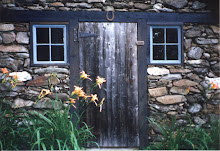Anton Rausch's "Mother and Child"
Antonio Polito: This has been the century of the common people. Who now represents these "common people"?
Eric Hobsbawm: At the beginning of the 20th century, the peasant was a typical human being who lived off the land. But at the end of the 20th century, this is no longer the case. We could have chosen a worker, a member of the working class that grew enormously during the century, and probably reached its peak in the third quarter of the century. But today, its size and influence are shrinking fast. What about an office worker, someone who works at a desk in front of a computer? He or she wouldn't do either. An office worker would be fine for western Europe or the United States, but there are still vast areas of the world where this image would not mean very much.
If you insist on looking for a symbol for the 20th century, I would suggest a mother with her children. The people who have most in common are mothers, wherever they live on the face of the earth, and in spite of their different cultures, civilizations, and languages. In some ways, a mother's experience reflects what has happened to a large part of humanity in the 20th century. What is no longer typical in our era is the traditional family structure that develops around the mother. Of course, there wasn't only one type, but almost everywhere there was some family structure. This is no longer true today.
But in spite of the fact that humanity's variety and the rapidity with which it has changed during the 20th century make it very difficult to choose a symbol for the "common people", if there has to be one, I would choose a mother with her children.
from ~ On the Edge of a New Century, Conversations with Eric Hobsbawm by Antonio Polito; New Press, 2000.
Eric Hobsbawm is a fellow of The British Academy and The American Academy of Arts and Sciences. His many books include Industry and Empire; Uncommon People; and On History.








































